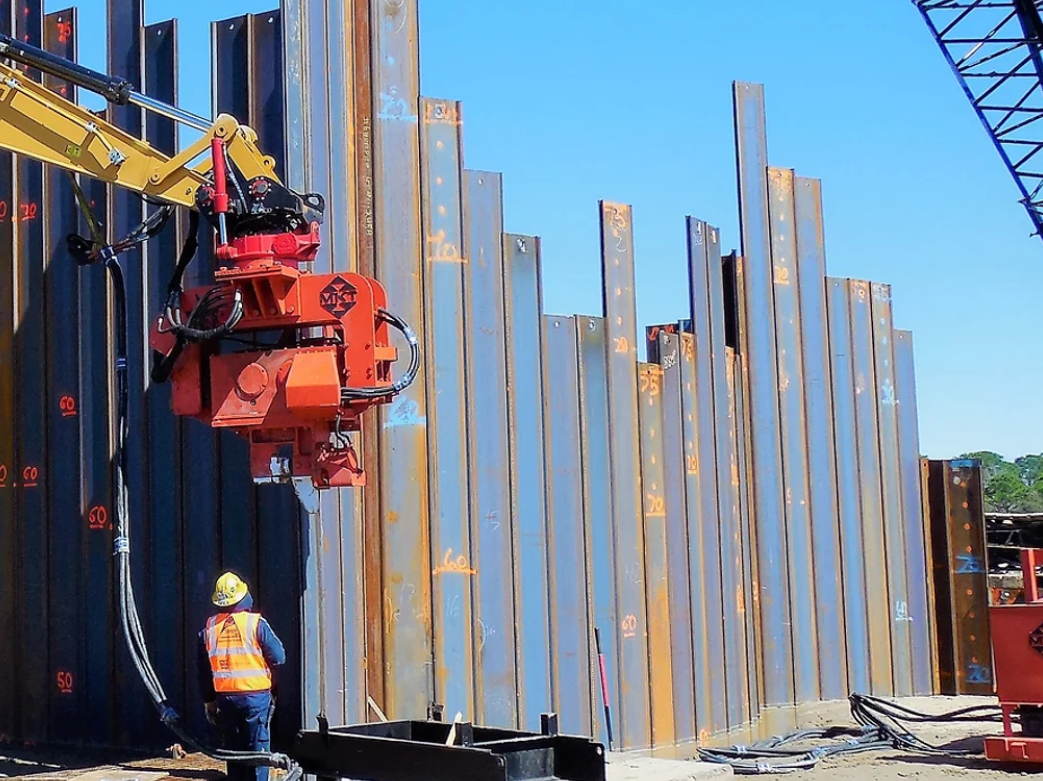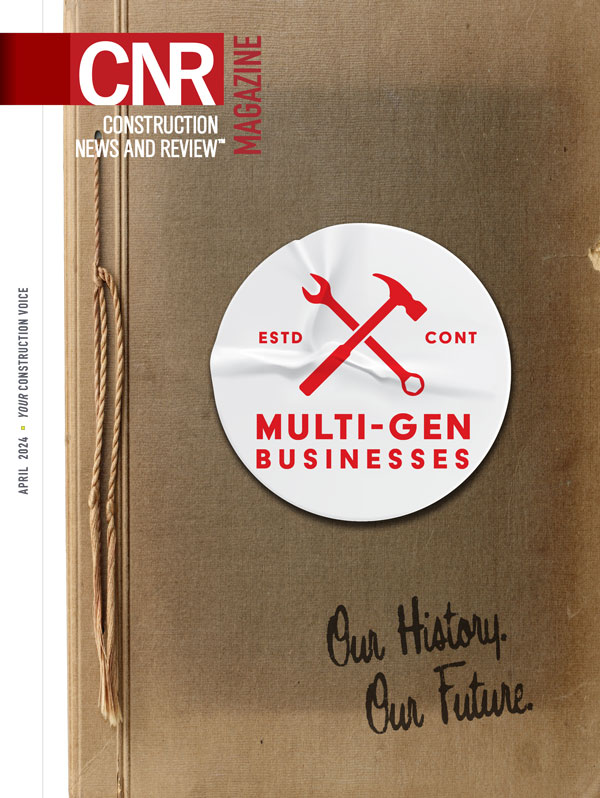2024 Construction Industry Trends Continue
By KRISTEN FRISA
The construction sector remains consistently strong and steady despite the country’s economic and social challenges. Although construction is facing challenges in 2024, there are also numerous opportunities for industry growth and change – many of them related to available, affordable technology.
Accessible designs
Technology has revolutionized the way construction professionals design buildings. Building Information Modeling leads to better project outcomes, including fewer changes to the design, better client understanding of the design team’s vision for the proposed building and improved relationships between the client and the design team.
Through 2024, BIM’s use will be impacted by the emerging capabilities of 3D printing, augmented reality technology and improved sharing and communication through cloud frameworks. These innovations will further improve BIM’s ability to ensure owners, designers and builders understand one another.
Computer-assisted construction and prefabrication
Artificial intelligence (AI) is not exactly new, but the technology that drives it is improving with incredible speed. AI can be used to run scheduling scenarios to reduce risk, bid more accurately and develop contingency plans for when things change mid-build.
Construction robotics have come a long way, too, with machines that can lay bricks alongside masons, reprint drawings directly onto jobsite surfaces or excavate trenches. Robots can help improve job safety and alleviate labor shortage woes and often work with other popular technologies like BIM.
Construction experts vary on their opinion of how far prefabrication can take off in the construction industry. Still, one thing is for sure: increasingly more construction elements are being constructed off-site in manufacturing facilities and trucked to the construction site ready for installation. Prefabrication can improve the efficiency and quality of construction, while offering safer indoor working conditions that appeal to many laborers.
Focus on sustainable construction and green building
Construction firms are facing increasing pressure to build sustainable and efficient buildings. Construction businesses must track and comply with continually evolving environmental regulations and respond to client interest in sustainability while simultaneously controlling costs.
Luckily, lower carbon footprint-building materials and cleaner-running equipment are becoming easier for contractors to access.
Technology is a big part of the sustainable building landscape. Construction management software helps contractors avoid wasteful errors, prefabrication can reduce construction material inputs and BIM can lead to better construction outcomes the first time.
Construction technology in 2024
Since construction began its digital revolution, new products have cropped up for nearly every aspect of project completion. Their use has ushered in many benefits to the way owners, architects and builders approach each construction project.
Improved efficiency
Building takes considerable time, money and labor power. However, construction technology has allowed builders to become more efficient in the way they do things. Faster communication and document sharing, especially through process-specific construction management technology, helps construction teams sidestep costly errors, recognize challenges with enough lead time to mitigate any time loss and explore design and scheduling scenarios to determine the best available options.
Future improvements in AI will help contractors strategize for greater efficiency, while prefabrication will reduce lost time due to bad weather and labor shortages.
Reduced costs
Recent advancements in building software and cloud-sharing frameworks can reduce costs in many functions across a construction project.
Procurement and inventory management software reduces downtime while reducing construction materials costs, and labor planning systems make the most of each worker’s time, skills, and expertise.
Better project outcomes can lead to improved client relations, shorter payment timelines and fewer cases of expensive litigation, while data collection and organization can help settle disputes faster and more favorably.
Construction technology itself represents an expense, so builders will have to balance the cost and benefit of each product. However, as tech use and proficiency increase, construction companies that use and integrate software to improve their outcomes will have a competitive advantage.
Higher quality
Construction firms who harness technology can actually produce better buildings. Predictive modeling and the greater accuracy achieved through drone exploration and computer-controlled excavation reduce human error to ensure improved outcomes.
BIM and drone technologies help find problems early on so that they can be corrected before more substantial damage occurs. Finally, technology has allowed for the production of strong, sustainable, and disaster-resistant building materials that can last generations.
The challenges of using technology
There is still some reluctance among contractors to fully commit to using construction technology. Construction companies are on tight margins, so technology has to have the potential to bring in strong returns.
High initial investment
Some software companies require an up-front commitment before contractors can even get started learning and understanding how a product will impact their operations, be accepted by their employees, and impact their bottom lines. That commitment is a full-faith leap in an industry that already has narrow margins. Work with a fully vetted construction tech firm that can talk to your team members, offers excellent support through the first projects you use it on, and has a reputation for usability.
Limited expertise
Many construction teams have limited experience in adopting new technology, especially when it comes to retrofitting already entrenched construction processes to fit a new system. Contractors should find a small number of team members who are fully committed to learning and integrating the new technology and can mentor other employees on its uses and benefits.
Integration with existing systems
Challenges to technology adoption become even more difficult as a firm’s tech stack grows. How will the new inventory system work with the existing construction management software? Without integration, data input efforts may actually increase, as numbers have to be put into one system, then translated to another. Firms should prioritize technology that will work with existing systems to make the best use of the available data and reduce human error.
The future of construction through tech
While there are many challenges still facing construction firms, the industry is poised to realize the incredible power of new trends like AI and automation for more transparency in project planning and execution, ultimately resulting in better contractor/client relationships and improved project outcomes.
Contractors sometimes shy away from investing in new technology because they’re worried about high upfront costs, difficulty in learning and using the new products, and whether the technology will work well with existing systems and processes.
To alleviate these worries, construction firms should do thorough research on the products they try, picking ones that will provide improvement where it’s needed most, offer good support services and integrate well with programs they already use.
Contractors need to continue embracing new technologies in 2024 and beyond to remain competitive and lift up the industry through innovation and improvement.
Kristen Frisa is a freelance construction and technology writer.
Fresh Content
Direct to Your Inbox

YOUR CONSTRUCTION VOICE IN ST. LOUIS AND BEYOND
Join CNR Magazine today as a Content Partner
As a CNR Content Partner, CNR Magazine promises to support you as you build, design and engineer projects not only in and around St. Louis, but also across the U.S. CNR is equipped and ready to deliver a dynamic digital experience paired with the top-notch, robust print coverage for which you’ve always known and respected the magazine.




